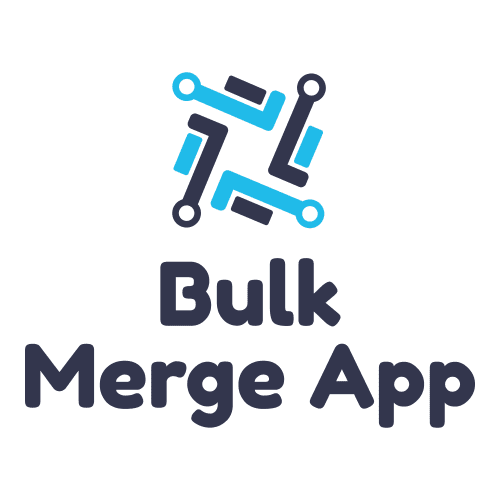Salesforce Forecast: What It Is and How to Set It Up

Many businesses choose to integrate their customer data into Salesforce for its consolidated storage solutions. But if your business is new to Salesforce, or even if you’ve used it for a while, you may not be familiar with its many powerful, advanced features. One of its most beneficial features is called Salesforce Forecast.
This tool is designed to analyze past and projected sales data in order to help your business accurately strategize for its future. Learning to properly integrate this tool into your sales strategy can lead to widespread, positive impacts on upcoming revenue prospects.
Introduction to Salesforce Forecast
The primary goal of the Salesforce Forecast tool is to create accurate revenue projections for your company. You can generate these for any forecast period. This automated tool integrates relevant data from past sales with the current structure of your sales pipeline.
The Salesforce Forecast tool is particularly powerful since it leverages the power of AI to find data trends that less-advanced systems would miss. It’s an important tool for anyone to have in their Salesforce project management toolbox.
Benefits of Using Salesforce Forecast
There are a wide variety of sales forecasting tools in the business world. Any forecasting is better than none, however, tools like spreadsheets, pen-and-paper methods, and outdated software won’t provide the forecasting accuracy that you need to thrive in today’s competitive market.
With the right implementation strategy, every team within your company can benefit from the Salesforce Forecast tool.
As one of the most accurate forecasting tools on the market, Salesforce Forecast can transform the way that you plan your sales and marketing strategies. It’s a great way to manage the opportunities that abound within your company’s growing landscape. Specifically, the data that this tool provides can help you:
- Generate customizable Salesforce forecast reports
- Accurately budget for the coming fiscal quarter or the coming year
- Modify your sales pipeline to increase revenue
- Build strong relationships with your clients and increase client retention
- Isolate any inefficiencies in your current pipeline
- Spot unique sales opportunities
- Create accurate benchmarks for your sales team
- Identify the top sellers on your team
The Salesforce Forecasting reports and dashboards are comprehensive and adaptable to the unique needs of your business. You can even break down the revenue forecasts that Salesforce provides into targeted data points. This means that you can separate revenue opportunities into those that are relevant to specific sales leaders, operating units, managers, or individual salespeople.
Customer relationship management (CRM) software is the best tool to use when generating revenue forecasts. Salesforce’s key tool for forecasting sales revenue is included in a program called Sales Cloud. The editions of Salesforce that include the forecasting tool are as follows:
- Professional
- Performance
- Developer
- Enterprise
- Unlimited
This tool allows for detailed breakdowns of revenue sources and current pipelines. It allows you to accurately attribute portions of past revenue to applicable departments and even down to individual members of your sales team.
Before implementing the forecast tool, it’s important to ensure that all of the relevant past and projected data is up-to-date, correctly labeled, and stored in the right location. In the end, the Salesforce Forecast tool is only as accurate as the data that it processes.
How to Set Up Salesforce Forecast
The best way to prepare your system and data for use in the Salesforce Forecast tool will differ from one business to the next. Some businesses have relatively straightforward revenue pipelines while others require complicated data breakdowns for each of their disparate revenue streams.
If you have any questions about how to forecast in Salesforce, consider consulting a Salesforce expert. They can help you design the best custom Salesforce forecasting strategy for your business.
Enable Forecast in Salesforce
To enable forecasting with Salesforce and Sales Cloud, you should find the “Forecast Settings” page in SetUp. This area allows you to customize the program to meet your needs and enable specific forecast users.
There are a variety of settings that you can specifically configure once you’ve enabled the program. You’ll need to define certain features before you can use the tool. Additional features are optional.
For example, when working with complex revenue pipelines, you may want to consider enabling Salesforce collaborative forecasting features. Other relevant settings that you can customize and control include:
- The forecast type — you’ll need to create and activate at least one of these before you can begin to use the tool
- Forecast manager and owner adjustments
- Single category or cumulative forecast types of rollups
- The default date range for your output
- The default currency for all relevant calculations
- Forecast tabs that are only visible to specific users
- A forecast hierarchy to control the ways that users can modify the data
Define Forecast Categories and Quotas
Finally, you can use the Salesforce Forecasting settings menu to customize your forecast categories and team quotas. Assign the given categories unique names that apply to your data pipeline. This will help you tailor the forecast process to your datasets.
From within the Salesforce Forecast settings, you can show quotas and quota attainment percentages by selecting the “show quotas” option.
Manage and Track Sales Forecasts
Properly implementing Salesforce’s customizable forecasting tool allows you to generate a wide range of useful sales and revenue data. With proper planning, you can create outputs that are specific to desired sales cycles and teams. Ideally, you’ll want to distinguish the generated dashboards and rollouts between users. With expert advice and a little bit of experimentation, you’ll soon be tracking sales with a custom setup that’s just right for you.
Efficient Salesforce Implementation Solutions
To get the most out of your CRM software, you need to take full advantage of every relevant tool that Salesforce has to offer. If you’re new to Salesforce, or revenue forecasting in general, you’ll get the best results by consulting Astreca’s expert data technicians. Astreca’s team has the knowledge, skills, and turn-around time needed to create and utilize your business revenue forecast as soon as possible.
For all of your Salesforce Forecasting needs, contact Astreca Consulting today.
#CRMForecasting #CRMStrategy #ForecastingTools #SalesforceForecast #SalesforceInsights #SalesforceTips #SalesForecastSetup #SalesPredictions






